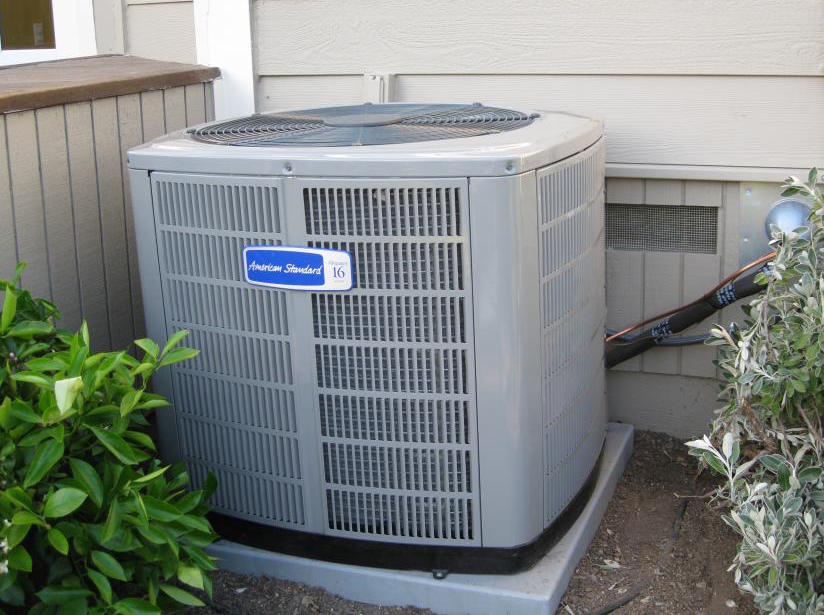
Check your air conditioning system early, before the first heatwave hits. Photo: Kelly Plumbing & Heating, Inc. (2017)
“I thought you don’t need air conditioning in San Francisco,” we’ve all heard someone say (usually an out-of-towner). But anyone who lives beyond the city limits knows the truth: that cool and foggy peninsula is surrounded by areas that stay hot and dry well into October. The key to staying comfortable and sane during the summer is a properly functioning air conditioning system. Before you flip the thermostat from “heat” to “cool,” take some simple steps to make sure your system is ready to go. With the Bay Area’s changeable spring weather, be sure to check your system early—you don’t want to be one of dozens of desperate customers contacting HVAC technicians when the first heatwave of the season hits.
OUTDOORS
Remove winter covers. If you used a cover to protect your HVAC system’s compressor unit during the cooler months, be sure to remove it before you start. Leaving the cover on while the unit is in operation limits air transfer and can cause serious damage to the system.
Clear away debris. If you didn’t use a cover, chances are the unit’s exterior is covered in leaves, dirt and other forms of debris. Yard waste can make its way into the condenser coils and reduce the efficiency of your system. To clean this out yourself, cut off the electricity to the unit and then use a screwdriver or nut driver to remove the grilles or panels. Use the soft attachment of your vacuum to capture the debris, then reassemble. If keeping track of all those pieces sounds too ambitious, a good spray with a garden hose may also do the trick.
Clear away plants. HVAC professionals recommend keeping a two-foot area around the unit clear of any flowers, shrubs or other garden incursions. If you plan to mulch in the area around the compressor, be careful not to apply it too densely near the unit. These steps should reduce the amount of organic materials that find their way into the unit.
INDOORS
Change your air filters. If you can’t remember the last time you changed the air filters in your HVAC system, you’re not alone. Technicians report that most homeowners don’t replace them at the recommended intervals (usually one to three months, depending on the type of filter). Failing to do so affects both your indoor air quality and your system’s performance.
Check the air registers. Confirm that all the registers are open and unobstructed by furniture, rugs or toys. Remove any accumulated dust or pet hair. If you have young children in your home, it’s a good idea to unscrew the register covers and check that nothing is stuck inside.
Inspect the ductwork. Take a look at the ductwork in your basement or attic and keep an eye out for holes, tears or other indications of damage. Minor ductwork problems can be repaired with aluminum foil tape.
Start Your System
Now you’re ready for a test run. Turn down the thermostat and check every vent in your house to verify the air is flowing. If your system doesn’t start, double check that you’ve switched the thermostat from “heat” to “cool,” and confirm that the electrical circuits for the unit are open. If you still notice problems (the system fails to start or functions feebly), it’s time to find an HVAC contractor. If not, enjoy your cool and comfortable home as the mercury climbs.
